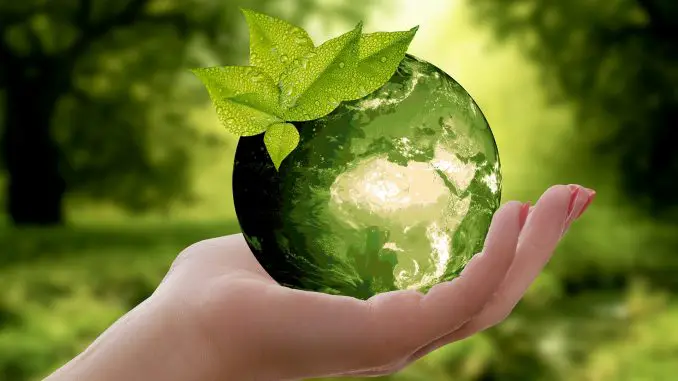
The more the carbon dioxide concentration increases, the greater part of the emissions will be absorbed.
Why worry? Our grandparents had to endure two world wars, our parents threatening nuclear war, overpopulation and starvation. The minerals and bird song would end and the human race would disappear in a sea of poisons, it is said. Not much is left of these nightmares. In most countries on earth, the population is both older and healthier. The birds chirp and in our country sell Coop, ICA with several bird seeds like never before.
Problems are: AIDS, religious war and of course the oil. It is serious but not urgent. Man has the time and, above all, the ability to solve them. I do not think that global warming, which is supposed to be caused by our way of life, is an acute problem.
The UN has appointed a commission, IPCC, to monitor developments in this area. The IPCC does not conduct any research itself but is a political body that likes or dislikes what is published in the field. We believe that our current weather and climate are completely unique.
Let us then remind IPCC that in the Bronze Age it was two degrees warmer than today; that in the Iron Age (500 AD) it was so cold that the great rivers in Europe froze to; that in the Viking Age it became so hot that you could grow grain in Iceland and that Greenland was built. Finally in the 17th century it became so cold that the Belts froze. Climate as well as the weather is chaotic and impossible to predict.
Now to the greenhouse effect. It all started in Vienna 150 years ago. Two gentlemen, Stefan and Boltzman, then designed the law that shows the radiation from bodies such as the earth or the sun.
This law is not any. It is a law of nature of the same type as the theory of relativity. The law makes it possible to not only calculate the temperature of the solar surface but also the energy effect the earth per square meter receives from the sun. The earth’s temperature over a year is remarkably constant. Thus, the entire incoming effect must somehow leave the earth. The only possibility is that it radiates. But if we use the law, we get a surprising result. The soil surface should be 35 degrees colder than it is. Obviously, it is not the surface of the earth that emits radiation to world space, but a protective layer on the top of the clouds that makes us feel reasonably warm on the earth’s surface.
The layer contains water vapor, water droplets, ice and carbon dioxide. These are called greenhouse gases. It is difficult to calculate the significance of the clouds. Therefore, this is omitted in the reports cited by the IPCC with valid otherwise. This is despite the fact that the clouds are probably the most important component of the greenhouse effect. The gas that interests IPCC, carbon dioxide, is one-tenth as effective as water vapor alone.
The Stefan / Boltzman Act shows that violent changes in energy flows would cause a small change in temperature. A four-degree change, equivalent to 16 watts per square meter, is more than needed to power all the earth’s low-pressure, storms and hurricanes. This does not prevent the IPCC from believing that such things can happen.
The IPCC’s idea is that the carbon dioxide at the soil surface prevents the transport of energy from the surface to the radiant layer. But energy transport via radiation is small compared to transport via water vapor. Water vapor is formed over the oceans, rises upwards and condenses again into water in the clouds and emits energy. That process is completely independent of carbon dioxide.
Carbon dioxide concentration in the atmosphere and temperature are monitored. Note that the temperature change comes first, the change in the carbon dioxide concentration thereafter. This means that the carbon dioxide concentration is equilibrium, determined by the sea level of hydrogen carbonate and by pH.
What has happened is that human use of carbonaceous fuels has increased the carbon dioxide concentration. But the equilibrium requirement means that more carbon dioxide than before is absorbed by the seas, in fact, half of all human emissions.
The more the carbon dioxide concentration increases, the greater part of the emissions will be absorbed. We will never achieve any equilibrium if we continue to live as we do, but we will get a stable state at a carbon dioxide concentration about 50 percent above the equilibrium value and a possible temperature rise to some degree.
Locally, the deviations can be 5 to 6 degrees. This has nothing to do with carbon dioxide. We and the earth can continue to live as we do, which means thrift and a sensible use of given resources.
The last 20 years have on the whole been successful for humanity. Terrorism and religious war are ongoing, but threats of nuclear war, overpopulation, poverty and starvation have, if not disappeared, been reduced. The material has been successful over the years. This has partly been due to technological development, computerization, and digitalization, but mostly to the fact that people have become free and released detailed control by few politicians.
Now these same knowledgeable politicians see their chance to come back and cure the climate by regulating in detail what we eat, how we dress, how we are transported and, by extension, what we think. The precautionary principle, which is so often invoked in an environmental context, should mean that we do not comply with the IPCC’s recommendations
Leave a Reply